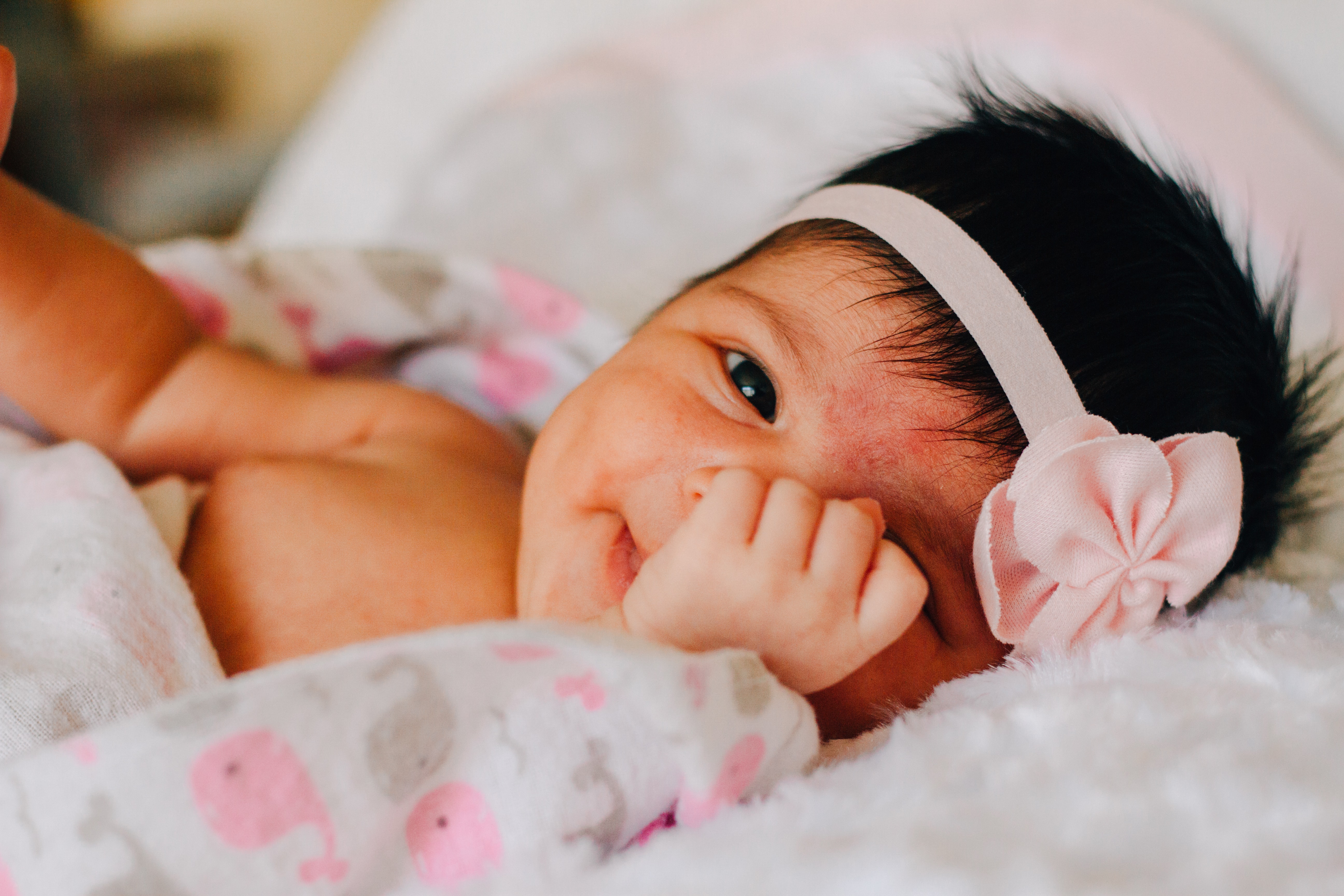Getting hands on with your baby's brain development!

The fascinating journey of your baby’s brain development began in the womb, and, at birth, the most active parts of their brain were those linked to survival – the areas that control vital functions such as breathing, heart rate and reflexes. But other areas of their brain have also been active for some time.
They developed touch in the womb
Your baby’s sense of touch developed by around the 8th week of pregnancy and their skin sent signals to their brain as they moved and touched themselves. During pregnancy, your baby’s hands will have been close to their face and as their hands touched their face and mouth signals will have been sent to their brain.[1]
Their great hands discovery
While your baby will have started to feel their body before birth, they still don't yet know where they physically 'begin and end'. However, they will soon learn that their hands are part of their body and that they can control how they move.
This hand fascination will grow and grow. You will see your baby moving and watching their hands, and this will help them to link what they can see with what they can feel. Moving and looking at their hands helps them to make and strengthen connections in their brain and supports the development of their physical, sensory and cognitive skills.[2]
They'll watch your hands too, but not to copy...
You might notice that your baby watches your hands if they come into their line of vision. Researchers have suggested that babies copy facial expressions and hand movements,[3] but more recent studies have found that this isn't the case for young babies.[4]
Rather than your baby watching your hands so that they can copy your movements, it's actually to help them develop their understanding of the world. Seeing your hands moving will lead to their understanding that they have hands too. They will then make the connection between the movements they see other people do and the ones they make themselves.
Their growing control will help them plan movements, and then imitate!
In the next few months, your baby will continue to explore their hands, and this exploration will strengthen connections in their brain between areas concerned with their senses and movement. They will gradually be able to control and plan certain movements to achieve something they want. In time, your baby will be able to copy the things that you do with your hands and will use imitation to learn new things.[5]
The journey of discovery continues...
References:
[1]. Addyman, C (2020) The laughing baby: The extraordinary science behind what makes babies happy. London: Unbound.
[2] Goddard-Blythe, S. (2004). The Well Balanced Child: Movement and Early Learning. Stroud: Hawthorn Press.
[3] Meltzoff, A. and Morre, K (1977) Imitation of facial and manual gestures by human neonates. Science 198, 75-78.
[4] Oostenbroek J, Suddendorf T, Nielsen M, Redshaw J, Kennedy-Costantini S, Davis J, Slaughter V (2016). Comprehensive longitudinal study challenges the existence of neonatal imitation in humans. Current Biology, 26, 1334–1338.
[5] Goswami, U. (February 2015) Children’s Cognitive Development and Learning. [Online] Available at: Pedagogy – Learning (cprtrust.org.uk) Accessed on 12th October 2021.